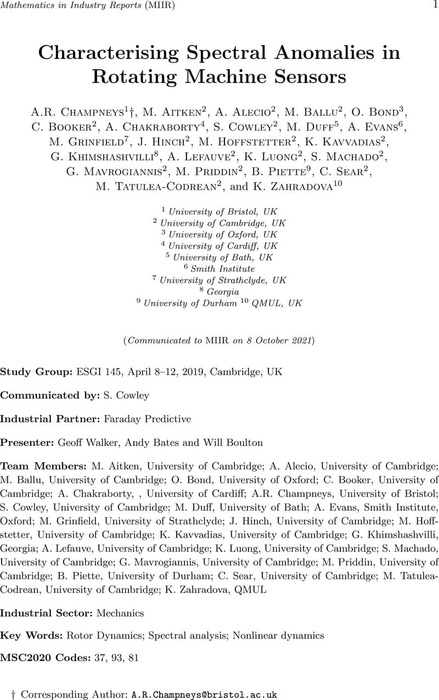Abstract
Several spectral analysis algorithms have been developed to identify spectral anomalies. A careful literature analysis is undertaken of sources of nonlinearity through bearing distress and other contacts and rubs within rotor dynamics. Several different models for such contact-force or lubrication nonlinearities are synthesised from the literature. These forces are implemented within a simulation of a simple Jeffcott rotor. Reasonable parameter values are identified and results are reproduced that are qualitatively similar to both those observed by Faraday Predictive and seen in the literature. The results enable a tentative hypothesis,
using the theory of Arnold tongues, about how the severity of bearing distress may be reflected in changes to the observed spectrum. Various recommendations are made as to avenues of further work to hone the
algorithms, apply spectral analysis to the synthetic simulation data, and to perform more systematic parameter studies.
Content






